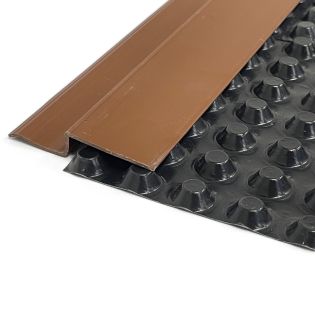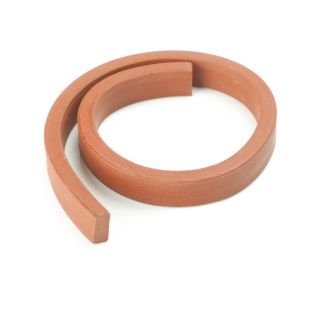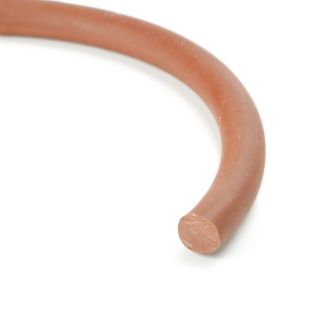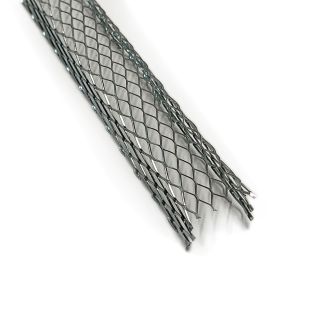Product code: 100005429
Manufacturer's article: 6910
InnoElast Sealant, black (Type 2), volume 600 ml / 900 g BT innovation
InnoElast Type 2 adhesive sealant (Black) is a one-component paste–like adhesive based on a silane-modified polymer (SPPO = silanterminated polypropylene oxide) that acquires elasticity and hardens in a humid environment. It is a one-component adhesive and sealing compound based on a silane-modified polymer that hardens in an elastic product upon contact with moist air. For sealing horizontal and vertical joints in concrete structures. It has high chemical resistance, which makes it possible to use this product as a durable material.
elastic sealing and adhesive material. It does not contain solvents, silicones and isocyanates.
Application:
- Adhesive and sealant for highly loaded joints, used throughout the construction sector (interior/exterior finishing of concrete, wood, metal without primer).
- Non-hardening sealant for facade and roofing works according to DIN EN 15651 1
- Sealing of basements and underground structures from the impact of pressure water tested up to 4.8 m
- For repair and sealing of defects
- Glue for the ProElast system
Product DescriptionInnoElast® type 2 is a one—component non-hardening adhesive and sealant for highly loaded joints used throughout the construction sector in accordance with DIN EN 15651-1.
- InnoElast® Type 2 provides adhesion to many materials without primer and seals seams up to 4.80 m, making them impervious to pressure water.
- Specifications
- One-component adhesive and sealant
- Good atomizability
- Does not require the use of a primer
- It is applied even on wet surfaces
- Application at a temperature of -3°C on ice-free surfaces
- It does not contain solvents and isocyanates
- Very high initial adhesion even in fresh form
- Resistance to atmospheric influences and UV radiation
- Can be painted
- High chemical resistance
- Compatible with other Elast products (compatible with bitumen)
Application areasAdhesive and sealant for highly loaded joints, used throughout the construction sector (interior/exterior finishing of concrete, wood, metal without primer).
- Non-hardening sealant for facade and roofing works according to DIN EN 15651 1
- Sealing of basements and underground structures from the impact of pressure water, tested up to 4.8 m
- For repair and sealing of defects
- Glue for the ProElast® system
- Product data and delivery form
- 5004115 InnoElast® Type II black,
- supplied in sleeve
- packages of 600 ml
Surface preparationThe surface must be strong and stable, free of dust, grease, oils and other materials that impair adhesion.
- The surface may be wet, but it should not be wet and have a visible film of moisture.
- Suitable for application on concrete and other mineral building materials, as well as drywall, wood, metal, PVC, ceramics, bitumen, etc.; in case of doubt, we recommend conducting preliminary tests.
- Application
- InnoElast® is applied directly to the surface using a squeeze gun. No primer is required for suitable surfaces.
- When sealing joints, it is necessary to observe sufficient width (≥ 5 mm) and depth (≥ 10 mm and ≥ ½ width) of the seam. In order to avoid 3-sided adhesion to the base of the joint, it is necessary to lay a suitable filling cord or a strip of polyethylene in the joint. It is recommended to glue the edges of the joint with adhesive tape. When filling the seam with sealing material, it is necessary to avoid the formation of voids and bubbles. By pressing and smoothing, ensure good adhesion to the sides of the seam. As a smoothing agent, pure liquid soaps (not diluted with water) are used, for example, dish detergent. The adhesive tape should be removed immediately after smoothing. The maximum thickness of the sealing material layer applied in one operation should not exceed 5 cm.
- When used as an adhesive, InnoElast® is evenly applied to the surface to be bonded and distributed with a notched trowel in a layer from 1 to 2 mm thick. To avoid voids and bubbles in the joint, you need to press the sealant tightly over its entire surface. Gluing a large-sized surface with InnoElast® requires a moisture-permeable base. For impermeable surfaces, we recommend using FlächenElast® adhesive and sealant with artificial hardener.
- For tight bonding of the ProElast® film, follow the application instructions in the passport "ProElast® System". In case of doubt during surface preparation and application, we recommend conducting preliminary testing.
Color black
The consistency is pasty
The product format is single-component
(in contact with moisture forms an elastic
rubber-like material)
Specific density 1.5 g/cm3
Hardness approx. 55 (Shore A)
measured after 4 weeks**
Strength at
stretching
approx. 2.5 N/mm2 (2 mm film)
Max. absorption
movements
10% (in seams)
Elongation at
the gap
> 400%
Temperature resistance from -40°C to 100°C (short-term up to 220°C)
Volume change < 2%
Resistance resistance < 2 mm
Resistance to
impact
chemicals
see the chemical resistance specification
InnoElast® type 2
Open time
excerpts
approx. 15 min (formation of a surface film)
Curing approx. 3 mm/24 h (measured at 23°C,
relative humidity 50%)
Temperature
usage
-3°C to 40°C
(temperature of parts and material)
Resistance resistance < 2 mm
Fire resistance class E (DIN EN 13501-1)
How to prepare the surface?
Surface preparation: The surface must be strong and stable, free of dust, grease, oils and other materials that impair adhesion.
The surface may be wet, but it should not be wet and have a visible film of moisture.
Suitable for application on concrete and other mineral building materials, as well as drywall, wood, metal, PVC, ceramics, bitumen, etc.; in case of doubt, we recommend conducting preliminary tests.
Application:
InnoElast® is applied directly to the surface using a squeeze gun. No primer is required for suitable surfaces.
When sealing joints, it is necessary to observe sufficient width (≥ 5 mm) and depth (≥ 10 mm and ≥ ½ width) of the seam. In order to avoid 3-sided adhesion to the base of the joint, it is necessary to lay a suitable filling cord or a strip of polyethylene in the joint. It is recommended to glue the edges of the joint with adhesive tape. When filling the seam with sealing material, it is necessary to avoid the formation of voids and bubbles. By pressing and smoothing, ensure good adhesion to the sides of the seam. As a smoothing agent, pure liquid soaps (not diluted with water) are used, for example, dish detergent. The adhesive tape should be removed immediately after smoothing. The maximum thickness of the sealing material layer applied in one operation should not exceed 5 cm.
When used as an adhesive, InnoElast® is evenly applied to the surface to be glued and distributed with a notched trowel in a layer from 1 to 2 mm thick. To avoid voids and bubbles in the joint, you need to press the sealant tightly over its entire surface. Gluing a large-sized surface with InnoElast® requires a moisture-permeable base. For impermeable surfaces, we recommend using FlächenElast® adhesive and sealant with artificial hardener.
For tight bonding of the ProElast® film, follow the application instructions in the passport "ProElast® System". In case of doubt during surface preparation and application, we recommend conducting preliminary testing.










